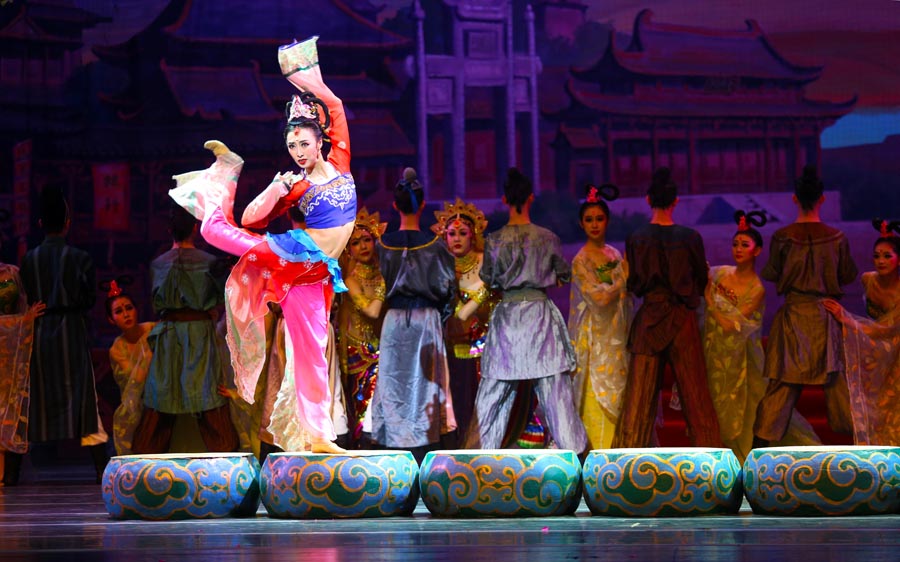 |
|
A stage photo of Silk Road, Flower Rain. [Photo provided to chinadaily.com.cn] |
Heart-stopping acts of athleticism and skill characterize much of Silk Road, but the opening is far more muted than the scenes that follow: a group of dancers emerges in fog, serving as living, breathing versions of the Buddhist art from the period. White-robed dancers move as one, enmeshing and separating in an act that flows like water, only to finally come together as one multi-armed waxwork - the famous Thousand-Hand Bodhisattva. It's a subdued opening, with flashes of gold breaking through purple clouds as a hint of the grandeur to come.
As the main action of the piece begins, the scenery and costumes get far more polychromatic. Since the historical Silk Road blended so many disparate cultures, it's only natural for a work showcasing that era's splendor to explode with color. But it can, at times, be a little much. Moments where the scenery and costumes clash, however brief, distract from the choreography - something you really don't want. Luckily, these instances are rare and don't detract from the overall impact of the show.
As Yingniang, Kang Qi stands out in an already stellar cast. Her flexibility is impressive; on several occasions it is put to the test, and audiences see just how far she is able to stretch. Wang Zihan's Zhang Shenbi is no slouch, either, and supporting players acquit their parts well; an evening at Silk Road is full of leaps, stretches and precisely controlled movement. It's a feast for the eyes and ears, culminating in an epilogue bursting with charm and character. In that vibrant climax, taking place after the main plot, pink petals fall from the ceiling in a celebration of the many different peoples found along the old Silk Road. It's a moment where an audience can feel overwhelmed by the diversity of nations on display, and though this Benetton interaction is surely heightened to create that warm, fuzzy feeling, it is no less striking an image.
Some of the most remarkable feats are reserved for the curtain call; this is fairly common, but it never fails to astound me when performers go through the rigor of a full recital but keep enough juice in the tank to wow the crowd one last time. That energy level is sustained throughout Silk Road, just as it was for hundreds of years on a route that brought the world together as one. It was a community bound together not just by commerce, but by brotherhood and camaraderie. A ballet can only go so far in depicting such a complex set of relations, but this one does a fine job anyway.